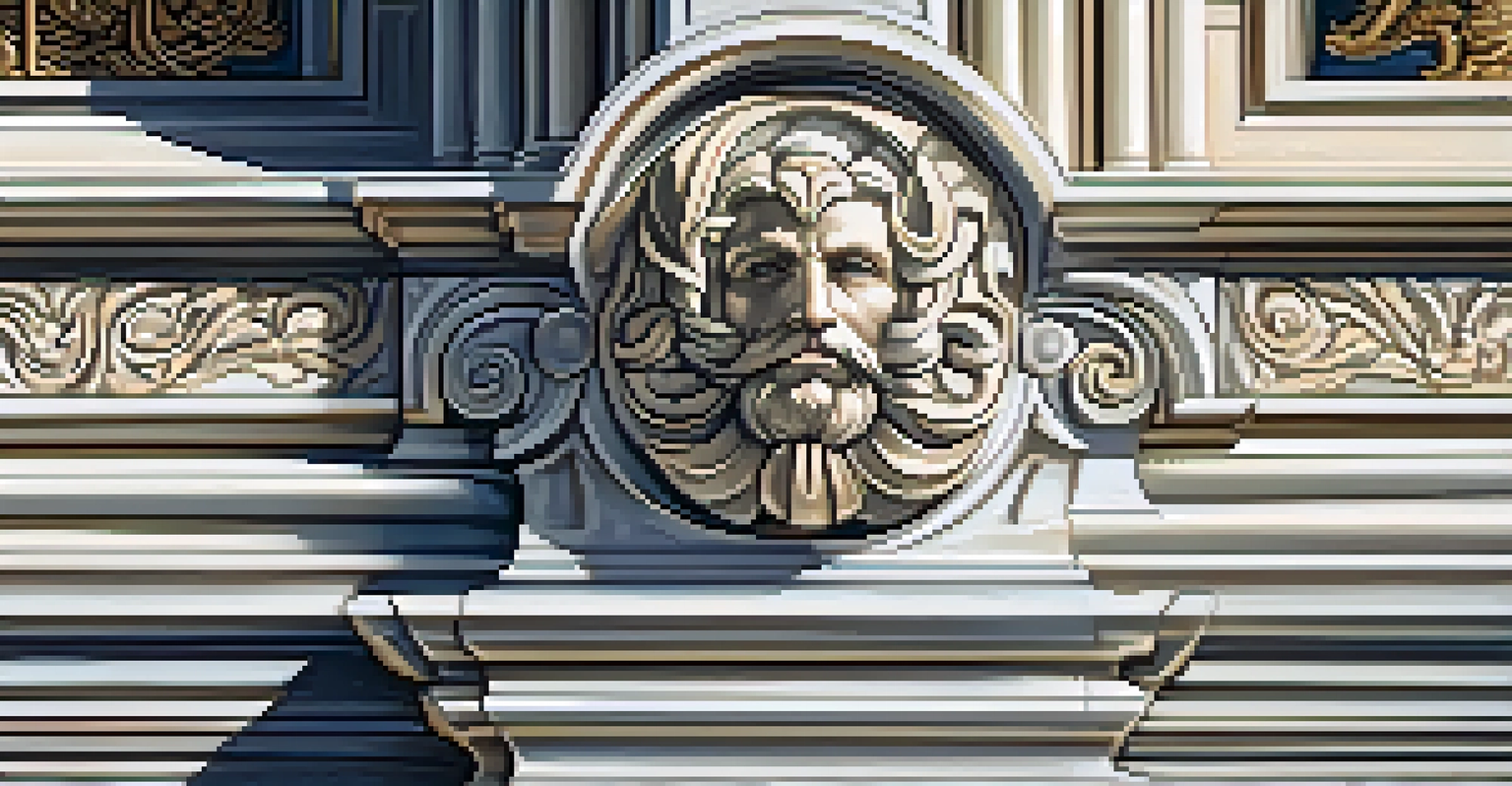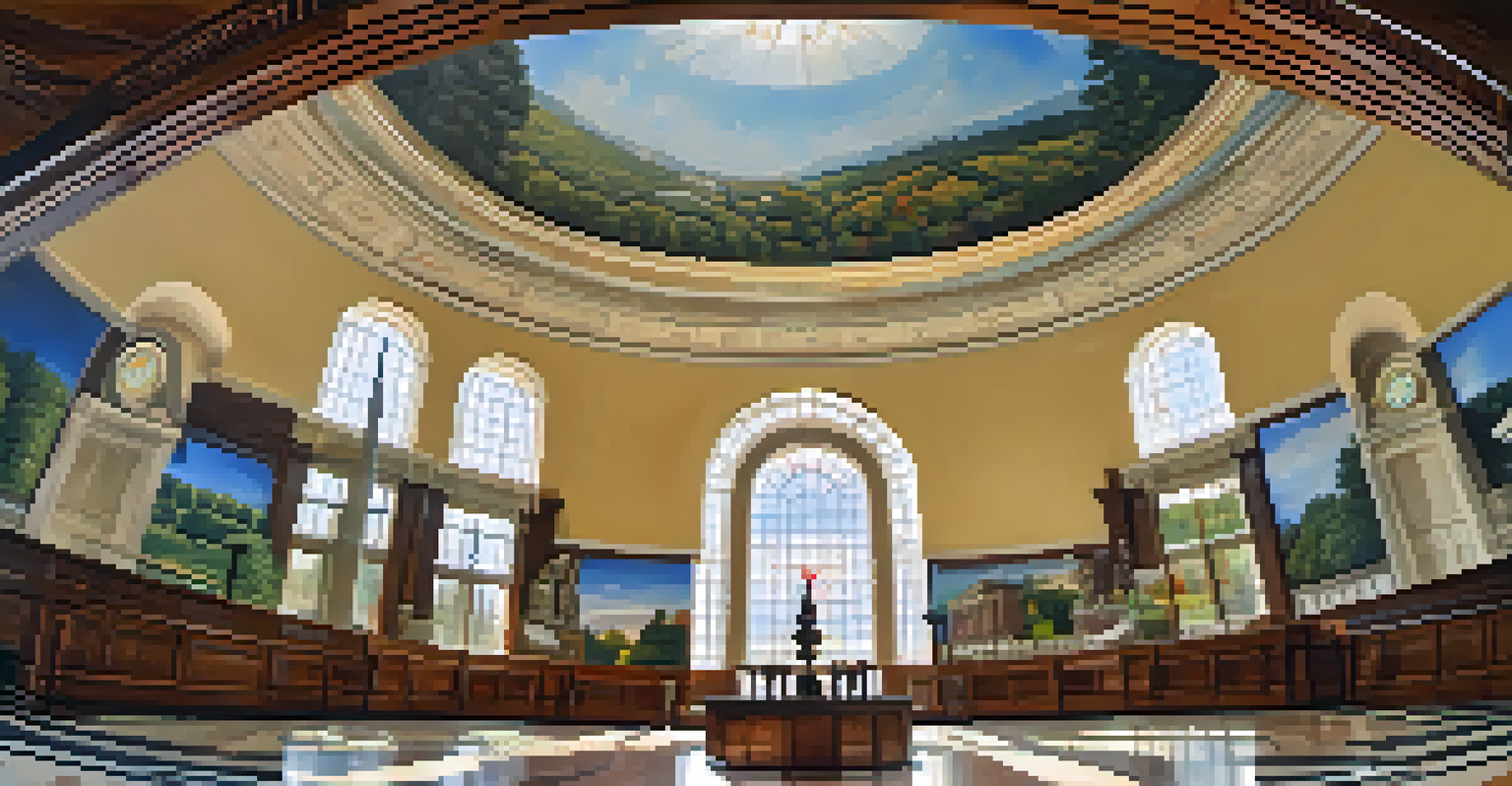The Significance of the Georgia State Capitol Building

A Glimpse into Georgia's Architectural Marvel
The Georgia State Capitol, located in Atlanta, is not just a building; it's a symbol of the state's history and governance. Completed in 1889, this architectural marvel showcases a blend of Renaissance and neoclassical styles. Its gold dome gleams in the sunlight, making it a recognizable landmark for both locals and visitors alike.
Architecture is the art of how to waste space.
As you approach the Capitol, you can't help but admire its grand entrance, adorned with stunning marble and intricate details. This building has withstood the test of time, witnessing the evolution of Georgia from its early days to a modern metropolis. It serves as a reminder of the resilience and spirit of the state.
The Capitol is not merely a seat of power; it represents the dreams and aspirations of the people of Georgia. Its design and structure echo the values of democracy and governance, inviting everyone to reflect on their civic duties.
Historical Significance: More Than Just a Building
The significance of the Georgia State Capitol extends beyond its architectural beauty; it is steeped in rich history. The Capitol has been the site of major political events, including the Civil Rights Movement, where pivotal decisions were made that shaped the future of the state and the nation. It serves as a backdrop for protests and celebrations alike, embodying the voice of the people.

Throughout its history, the Capitol has seen numerous changes, from expansions to renovations, each telling a unique story of Georgia's growth. It has housed many notable figures, including governors and legislators who shaped the laws and policies that impact citizens today. Each corner of the building whispers tales of governance, struggle, and achievement.
Architectural and Historical Significance
The Georgia State Capitol stands as a symbol of Georgia's rich history and governance, showcasing stunning architectural styles and hosting significant political events.
Moreover, the Capitol is a cultural landmark, drawing thousands of visitors each year who come to learn about Georgia's storied past. With guided tours and educational programs, the Capitol serves as an open book, inviting exploration and understanding.
Art and Culture: A Hub of Creativity
Nestled within the Georgia State Capitol are stunning art pieces that reflect the state's culture and heritage. From the intricate murals to the sculptures that adorn the grounds, each artwork tells a story of Georgia's diverse history. This blend of art and architecture creates a vibrant atmosphere, making the Capitol a cultural hub.
History is not a burden on the memory but an illumination of the soul.
The art within the Capitol is not only visually appealing; it serves as a conversation starter about Georgia's rich narrative. For instance, the famous mural in the Rotunda illustrates the state's agricultural roots, while other pieces celebrate notable historical figures. This fusion of art and state governance enriches the visitor experience.
In addition to permanent installations, the Capitol also hosts temporary exhibitions, showcasing local artists and their work. This commitment to promoting art fosters community engagement and highlights the importance of creativity in public spaces.
The Capitol's Role in Modern Governance
Today, the Georgia State Capitol continues to play a crucial role in the state's governance. It houses the offices of the Governor, the General Assembly, and the Secretary of State, making it a central hub for political activity. The building is alive with discussions, debates, and decisions that shape the lives of millions of Georgians.
Modern governance requires transparency and accessibility, and the Capitol embodies these principles. Regular sessions, public hearings, and community events are held here, inviting citizen participation in the political process. This openness fosters trust and accountability between the government and its constituents.
Cultural Hub of Art and Community
The Capitol is not only a seat of power but also a vibrant cultural center, featuring art that reflects Georgia's heritage and hosting events that engage the community.
Moreover, the Capitol serves as a platform for civic engagement, encouraging citizens to voice their opinions and concerns. Whether through town hall meetings or public forums, the building is a space where democracy thrives, reflecting the values of representation and inclusivity.
Preserving History: Restoration Efforts
As with any historical structure, the Georgia State Capitol requires ongoing maintenance and restoration to preserve its integrity. Over the years, various restoration efforts have been undertaken to ensure that the building remains a safe and functional space for governance. These efforts not only maintain its physical structure but also honor its historical significance.
One notable restoration project involved the cleaning and refurbishment of the iconic gold dome, ensuring it continues to shine brightly over Atlanta. Such projects are essential in protecting the Capitol's legacy, allowing future generations to appreciate its grandeur and history.
Community involvement in these restoration efforts is vital, as it fosters a sense of ownership and pride among Georgians. Educational initiatives and volunteer opportunities help engage citizens in preserving their state's heritage, ensuring that the Capitol remains a beloved landmark.
Visitor Experience: Exploring the Capitol
Visiting the Georgia State Capitol is an enriching experience that offers a glimpse into the state's political heart. Guided tours provide insights into the building's history, architecture, and the legislative process. Visitors can marvel at the stunning interiors while learning about the important decisions made within its walls.
The Capitol offers a variety of programs and events throughout the year, catering to different interests and age groups. From educational workshops to public lectures, there’s always something happening that invites community participation. These events transform the Capitol into a lively space for learning and dialogue.
Commitment to Modern Governance
The Georgia State Capitol continues to play a crucial role in modern governance, promoting transparency, civic engagement, and community involvement in the political process.
Additionally, the surrounding grounds feature beautiful gardens and monuments, perfect for leisurely strolls. Whether you're a history buff or simply curious, the Capitol offers a welcoming atmosphere for exploration and discovery.
The Capitol's Future: A Commitment to Community
Looking forward, the Georgia State Capitol remains committed to serving the community while adapting to modern needs. As society evolves, so do the functions and roles of government buildings. The Capitol aims to incorporate innovative practices that enhance public engagement and streamline governance.
Future plans include expanding educational programs that connect younger generations with their state's history and governance. By nurturing an informed citizenry, the Capitol seeks to empower Georgians to actively participate in their democracy.

Ultimately, the Georgia State Capitol is more than a physical structure; it embodies the spirit and aspirations of its people. Its future is bright, as it continues to adapt and respond to the needs of the community it serves, ensuring that it remains a cornerstone of Georgia's identity.